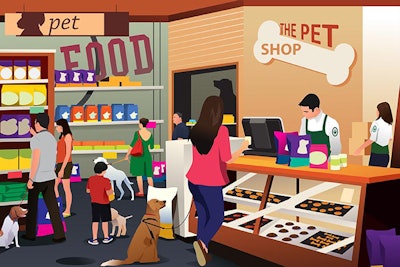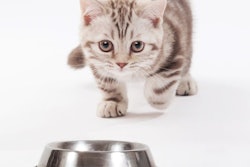
Here’s yet another interesting phenomenon emerging from the ongoing coronavirus pandemic: Consumer trust in famers, agriculture and other food sources continues to rise. Does this have any implications for pet food?
In a recent “Feed4Thought” survey conducted by Cargill, 84% of consumers in the U.S., Vietnam, Brazil and Norway expressed confidence in farmers to meet demands for food and feed for growing populations. “More than half of consumers indicate they feel positively toward/appreciative of farmers, with one-third saying their perceptions have improved compared to pre-pandemic,” read a Cargill press release. That jibes with two-thirds of the consumers (of 2,500 surveyed in the four countries) acknowledging increased pressure on livestock farmers to supply “safe, affordable protein” since the pandemic began.
The survey followed one conducted by Gallup in August 2020, which saw U.S. consumers ranking farming and agriculture as the top industry in terms of positive impressions, which were up 11% over July 2019. While the industry has always ranked relatively high, “this is the first time in Gallup’s 20 years of tracking views of business and industry sectors that farming and agriculture have overtaken the former top ranking industries of restaurants and computers,” wrote Victoria Broehm and Lacie Dotterweich in a blog post for the American Feed Industry Association.
As they alluded, the restaurant industry has previously ranked higher; despite so many restaurants having to close (permanently, in some cases) due to pandemic-driven lockdowns, the industry still came in third in the latest ranking. The grocery industry ranked second; Gallup did not indicate how that industry’s ranking had changed.
Has pet food built goodwill among pet owners?
Pet food did not appear among the 24 industries in the Gallup ranking; my hunch is that it’s not even included in the survey. That’s disappointing but not surprising, yet perhaps some inferences still can be drawn from the increase in consumer trust and appreciation for farming and food, as well as grocery.
“The data is a good indicator that the food and agriculture industry has built some goodwill over the past few months while working to keep grocery store shelves stocked with nutritious food for Americans and their families to eat,” wrote Broehm and Dotterweich. Isn’t it quite possible, even probable, that pet food manufacturers and retailers have built similar goodwill among pet owners by helping them ensure they could continue to feed their furry family members this year, despite all the chaos striking every sector of the economy and life?
We know that pet food sales have continued to build, especially in the latter half of this year, following an inevitable dip after the big lockdown-inspired stocking up of pet food in March. For the U.S. market, Packaged Facts is projecting 2020 sales to end up 7% over 2019, reaching US$31 billion.
Of course, sales do not necessarily equate to consumer confidence or positive impressions; after all, pets need to continue to eat. As long as the majority of pet owners are able to keep their pets, despite financial hardship, they need to keep feeding them.
Yet it stands to reason that pet owners who are able to find their pet foods of choice when and where they need them, especially during a crisis like a pandemic, will be more likely to have positive feelings toward the brands they buy and toward the pet food industry in general.
In a survey conducted by the American Pet Products Association in June, 81% of U.S. pet owners said they were able to find the specific brand of pet food they sought at the first outlet they tried, with 8% finding success at a different store. Similarly, two-thirds of respondents were able to find the brand of pet treats they wanted at the first store they tried.
June was about the time when stocking up of pet foods and other products had leveled off and stocks in stores (as well as online) were stabilizing. Since then, that situation has at least continued or even improved. That probably makes for satisfied pet owners.
How to build pet food customer loyalty
Still, no pet food company should assume that a steady inventory on shelves and online, or steady and growing sales, automatically translates to customer loyalty, satisfaction or trust. There are strategies and steps brands can, and probably should, be taking now to ensure their pet food consumers keep buying their products and feel positive about doing so.
“Brands and businesses successfully emerging out of this pandemic will most likely be those prepared for the ‘new normal’ of digital consumer engagement, e-commerce, cashless payment and at-home consumption,” said An Hodgson of Euromonitor International in a blog post, and quoted by my colleague, Lindsay Beaton, in her own post. “Additionally, businesses will be expected to put people and their well-being before profits. Successful companies will be those who understand the health and safety concerns that dominate the thinking of their consumers (and employees) and create value by focusing on hygiene, health and well-being.”
Hodgson’s post was from May, but the concepts and advice still apply now and likely will for some time. Keep pet owner and pet well-being in mind, and demonstrate that you are doing so in tangible ways.
View our continuing coverage of the coronavirus/COVID-19 pandemic.

















